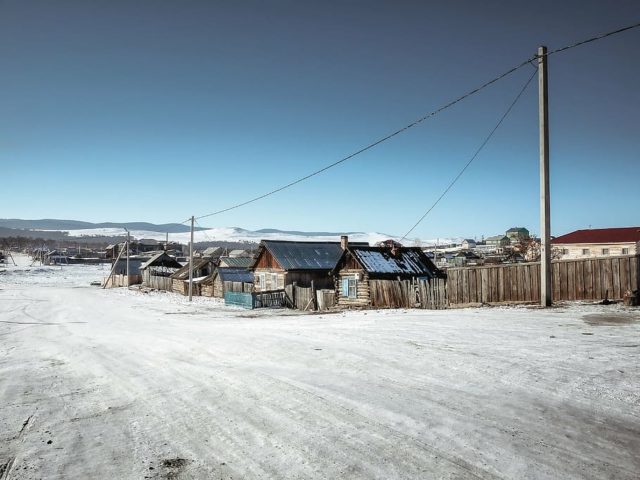
Demographic Decline and Urbanization Threaten Moscow’s Control over Borderlands
Publication: Eurasia Daily Monitor Volume: 18 Issue: 143
By:

Demography is not destiny except over the long term, it is often said. But for Russia, that time may be now. Accelerating population decline, exacerbated by the COVID-19 pandemic and increasing migration from the countryside to large urban centers, mean that vast swaths of the country, especially in critical border regions like Siberia and the North Caucasus, will no longer have the sizeable ethnic-Russian population needed to hold these locations and keep them pacified (see EDM, September 13, 2016).
As a result, the Russian government is casting about for solutions, including the building of new cities in Siberia and the relocation of Russians to rural areas of the North Caucasus. But there are not enough Russians ready to move to either place except under duress—and with the possible creation of problems elsewhere. The Kremlin, thus, hopes to additionally attract back a half million Russian “compatriots” from abroad over the next decade who could be dispatched to these locations. Unfortunately for the central authorities, Russia’s prospects for attracting anything like that number are vanishingly small. And so, the problems arising from a shortage of Russians along the periphery of the country are likely to grow rather than decline. Fears about what that will mean in terms of geopolitics and domestic security multiply as well.
Russian Defense Minister Sergei Shoigu’s calls for the construction of five or six new cities in Siberia and the Far East has highlighted the link between demography and national security, illustrated by Russian flight from the region on the one hand and anxieties over possible future Chinese encroachment on those territories on the other hand. Many Russians were initially enthusiastic about this new “giant” project because it recalls heroic Soviet-era undertakings like the Baikal-Amur Mainline (BAM) railroad that inspired earlier generations. But, cooler heads have pointed out that there is no demographic or economic basis for the building of such cities and that they could only be constructed if the government uses massive compulsion, as Joseph Stalin and other earlier rulers did (Svobodnaya Pressa, September 5). Polls show there is little stomach for such a titanic effort, and Shoigu’s proposals are increasingly being dismissed as election sloganeering (City 812, September 19).
But Siberia is not the only part of the Russian periphery where Russian flight presents the Kremlin with challenges. Over the last 30 years, the share of ethnic Russians in the North Caucasus has dropped to almost zero in Chechnya and significantly diminished in all the other non-Russian republics (Windowoneurasia2.blogspot.com, April 22). For that reason, some in Moscow are now picking up on Defense Minister Shoigu’s ideas concerning Siberia. They argue the Russian government should develop the rural portions of the North Caucasus in such a way that ethnic Russians will either be attracted back or settle portions of that restive region this group had never inhabited before. Yevgeny Tsots, a Regnum news agency writer, is among the advocates of this proposal (Regnum, September 19). He believes Moscow must take dramatic action now not only in the capitals of these republics, where ethnic Russians once were dominant, but in rural portions of these federal subjects where few had ever lived.
What makes Tsots’ scheme intriguing is that he favors bringing ethnic Russians to new settlements in the mountainous, rural areas of the North Caucasus rather than returning them to the cities. Such flows would reduce the likelihood of conflicts in the capitals but could easily heighten tensions in the countryside. On the one hand, the rural populations of the North Caucasus republics are almost homogeneous in their non-Russian composition. Establishing Russian outposts there would, thus, resemble the Cossack lines that the Russian Empire created as it expanded into non-Russian borderlands—and it would certainly be viewed as such. On the other hand, such a move would exacerbate what is already one of the greatest problems in the region: land hunger. As local populations have soared, fighting over land has intensified. If Moscow were to introduce ethnic Russians into the mix, those conflicts would be transformed from socio-economic ones to explosive ethno-national discord.
Because of the near certainty of increasing ethnic tensions, Moscow seems unlikely to move quickly in this direction. But the fact that it is talking about doing so at all reflects the growing fears in the capital that the emptying of Russian towns and villages is a threat to the country’s national security and must be addressed. Because the current regime has no new ideas of how to do so, it is reaching back to ideas from the 18th and 19th centuries, involving the establishment of the so-called “Cossack lines” that worked until they collapsed in the revolutionary upheavals of the first part of the 20th century.
Of course, even if Moscow were to decide to go ahead with either of these projects—whether in the North Caucasus or east of the Urals—it would have to find enough Russians to move there. Some have suggested bringing in migrants from Central Asia and the South Caucasus to free up Russians to guard the periphery, but that would generate new tensions in Russian cities and frighten many in the national majority with the prospect that Russia is rapidly ceasing to be “Russian” (Novaya Izvestiya, September 13; National Accent, September 14). And so, President Vladimir Putin has called for Moscow to organize the return of 500,000 Russian “compatriots” from abroad to boost the country’s demographic prospects. However, experts on this issue are nearly unanimous in concluding that this initiative will not succeed (Deutche Welle—Russian service, September 17).
Even assuming the Kremlin leader is able to attract half that number of people, it would still not be enough to solve the security problems of negative demographic trends in Siberia and the Far East. Consequently, the combination of Russia’s accelerating population decline and rapid urbanization is likely to loom behind all of Moscow’s decisions about domestic affairs for the foreseeable future.



